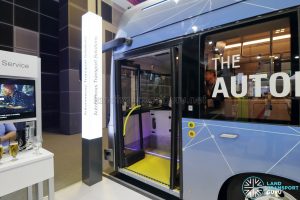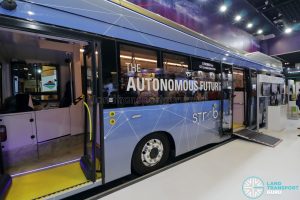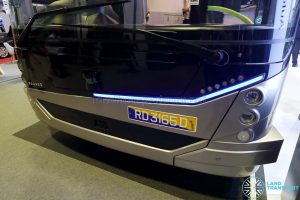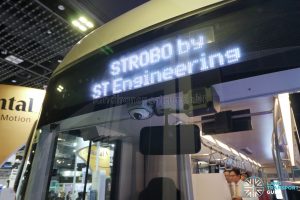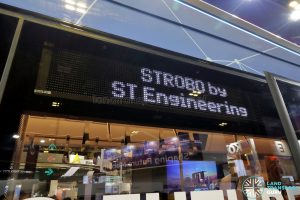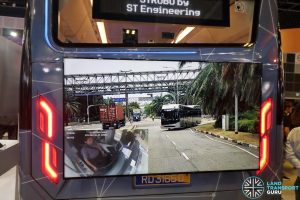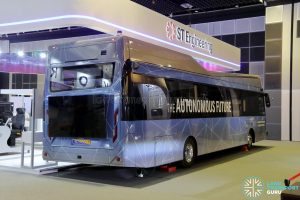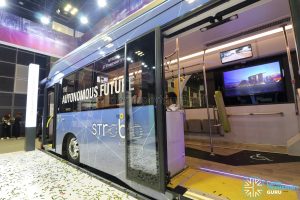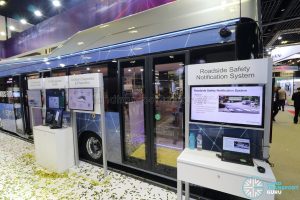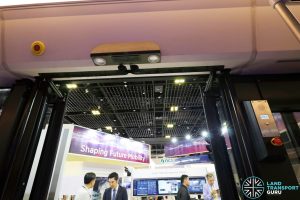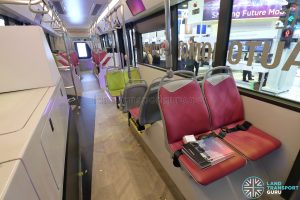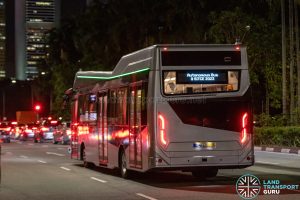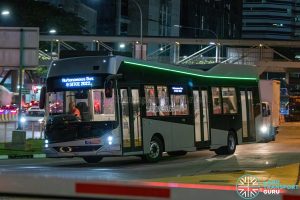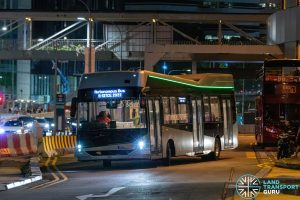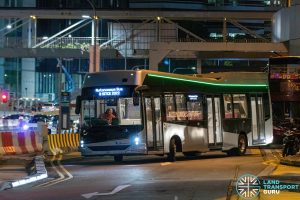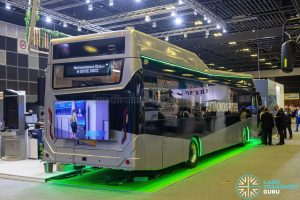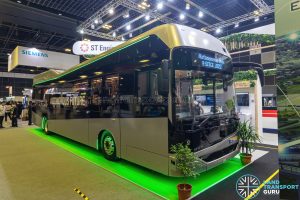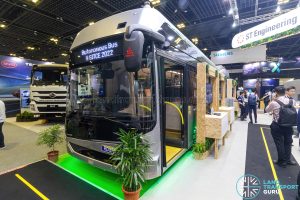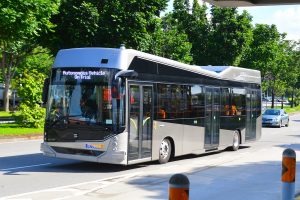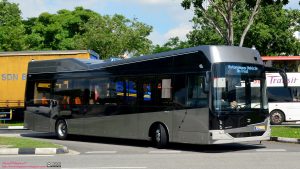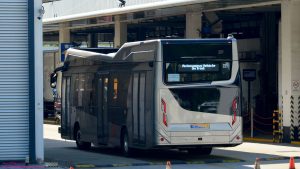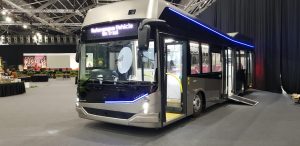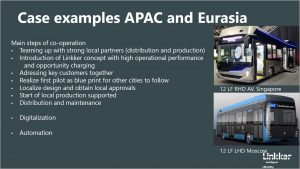Exterior
At the 26th Intelligent Transport Systems (ITS) World Congress, a video is shown of the bus navigating within Jurong Island.
Gallery (SITCE 2022)
Gallery (Prior to STROBO Series 12 rebranding)
ST Engineering Land Systems Singapore Business Night (October 2018)
Annexe: Opportunity charging
Based around the concept of Opportunity charging, the STROBO Series 12 Autonomous Electric Bus is charged at the terminus of a bus route, where charging points (typically overhead charging) are erected. The bus is sufficiently recharged in a short amount of time (usually several minutes) before the bus continues on its next trip.
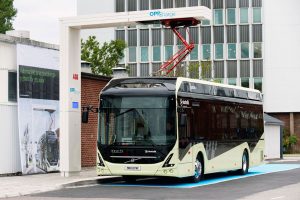
With fewer batteries required per bus, its advantages translate to a more spacious bus interior, lower environmental cost of battery production, and lower electricity consumption through reduced vehicle weight. Its disadvantages include the lack of deployment flexibility (on non-infrastructure-equipped routes) and the possible impact on bus operations should a charging station break down, and some redundancy is thus required, such as installing multiple chargers at terminating points.
Currently, efforts are focused on expanding the use of opportunity charging on suitable routes and the adoption of similar charging infrastructure between bus manufacturers, allowing multiple bus models to use the same charger.
The Opportunity Charging approach is favoured by European bus manufacturers. Conventional, depot-charged buses carry a large number of batteries on every bus to achieve sufficient operating range over a day’s worth of revenue service, and is the approach preferred by Chinese bus manufacturers.
Overhead pantograph
The STROBO Series 12 Autonomous Electric Bus is charged via overheard pantograph, based on the opportunity charging (OppCharge) platform.
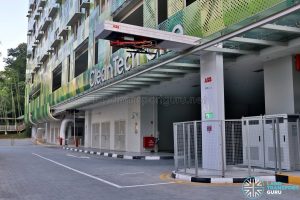
OppCharge is an open and competition-neutral interface seeking to accelerate the adoption of electric buses by being compatible with multiple bus manufacturers, hence offering operators choice and flexibility of buses without the need to modify existing charging infrastructure. These overhead pylon chargers with extendable pantographs are usually installed at the end stops of bus routes, allowing buses to quickly receive a full charge in-between trips.
Charging is fully automatic and secured by a two-way WiFi communication sequence. The driver gets a clear indication in order to stop within the specified ± 200 mm from the reference point. The charging sequence is started by activating the parking brake, and the driver can interrupt it at any time.
In Singapore, Swiss-Swedish engineering group ABB supplied four 450 kW chargers with installation, civil works, project management and commissioning. These chargers would allow the electric buses to be quickly recharged in less than ten minutes at key bus interchanges with an automated rooftop connection. A similar overhead charger was installed at Cleantech Park in support of the NTU-LTA-Volvo Autonomous Bus Trial. The Volvo 7900 Electric bus participating in the trial is OppCharge-compatible and is recharged with the ABB HVC 300P fast-charge system, which delivers 300 kW DC power.
External Links & References:
- LTA Inks Agreement with ST Kinetics to Develop and Trial Autonomous Buses – LTA
- Shaping Future Mobility – Autonomous Mobility Solutions – ST Engineering
- ST Engineering Steps Up Autonomous Vehicle Capability For Local Deployment and Overseas Rollout – ST Engineering
- ST Engineering launches 12m-long autonomous bus; public trials to start on Jurong Island next year – The Straits Times
Back to Electric Buses in Singapore
Back to Autonomous Buses in Singapore
Back to Bus Models

